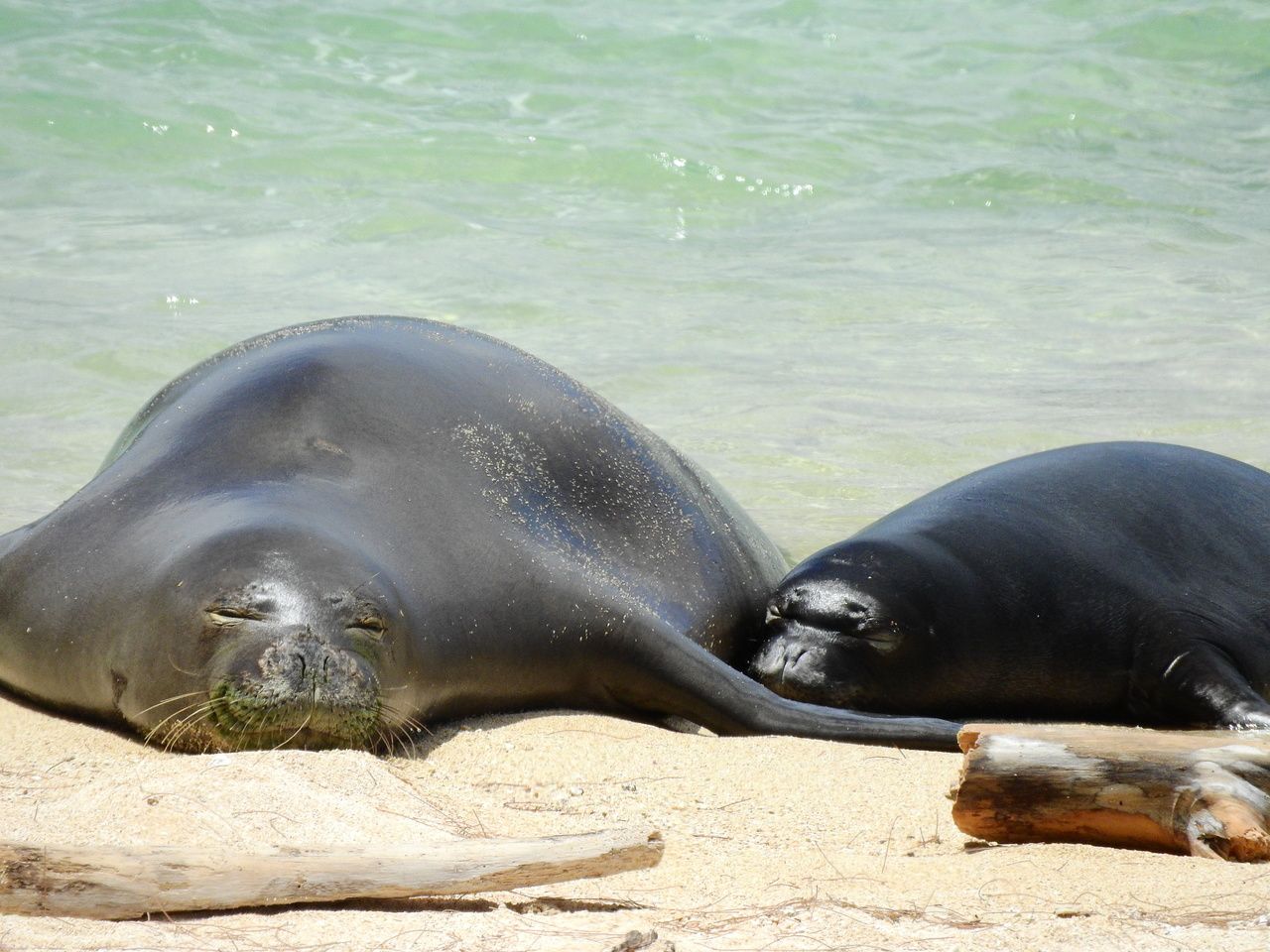
Three monk seals drifted to shore, where their bodies were discovered in June lifeless and sandy on a Hawaiian beach.
Some of the country's most endangered marine mammals,monk seals are now facing a tiny but deadly threat to their existence. Autopsies confirmed that the animals died from a disease called toxoplasmosis, caused by the microscopic parasite Toxoplasma gondii.
Toxoplasma gondiiis commonly found in cat feces, but has found its way into the ocean and is killing seals that are already dwindling in numbers. Only 300 of these animals are known to live on the main Hawaiian Islands, according to an announcement from the National Oceanic And Atmospheric Administration, a government organization responsiblefor the nation's ocean resources.

"This is especially concerning—considering that the loss of one female means the loss of her future generations as well," NOAA said in a statement.
The most recent death toll from the parasitic disease has risen to 11 since 2001, making toxoplasmosis the leading disease-related cause of death for Hawaiian monk seals.
The parasite is thought to have made its way into the ocean by way of cat feces, possibly from feral cats that live near the beach. Once the parasitic eggs are shed into the environment, they can live anywhere from months to years as they wash from land to sea, where they can infect marine mammals.
Cats are the only known reproductive host of the toxoplasmosis parasite, which reproduces in the feline digestive tract. Once released into the environment, these eggs can also infect other animals, including humans, according to the Hawaiian Department of Land and Natural Resources.
Most people who become infected with toxoplasmosis are healthy enough to keep the parasite from causing any illness, while a small percentage of people might experience symptoms similar to the flu. The Centers for Disease Control and Prevention estimates that approximately 10 percent of the population in the U.S. six years of age and older have developed antibodies to the parasite from a past infection.
The infection is much more threatening to marine life, like seals, dolphins and birds. To protect the environment, state officials ask that people avoid feeding feral cats.
"Since cats are the only animal that transmit the disease, it only makes sense that reducing the number of feral cats will reduce the risk of infection and serious illness or death," Dr. Bruce Anderson, health director Hawaii State Department of Health,said in a statement.
"Feeding cats near water obviously increases the risk of transmission but, given the nature of the watersheds in Hawaii, cats almost anywhere are probably contributing to the problem," said Suzanne Case, chair of the state Department of Land and Natural Resources.
Uncommon Knowledge
Newsweek is committed to challenging conventional wisdom and finding connections in the search for common ground.
Newsweek is committed to challenging conventional wisdom and finding connections in the search for common ground.
About the writer
Lisa Spear is a science writing fellow at Newsweek. She's previously contributed to a number of other outlets including Time and ... Read more





